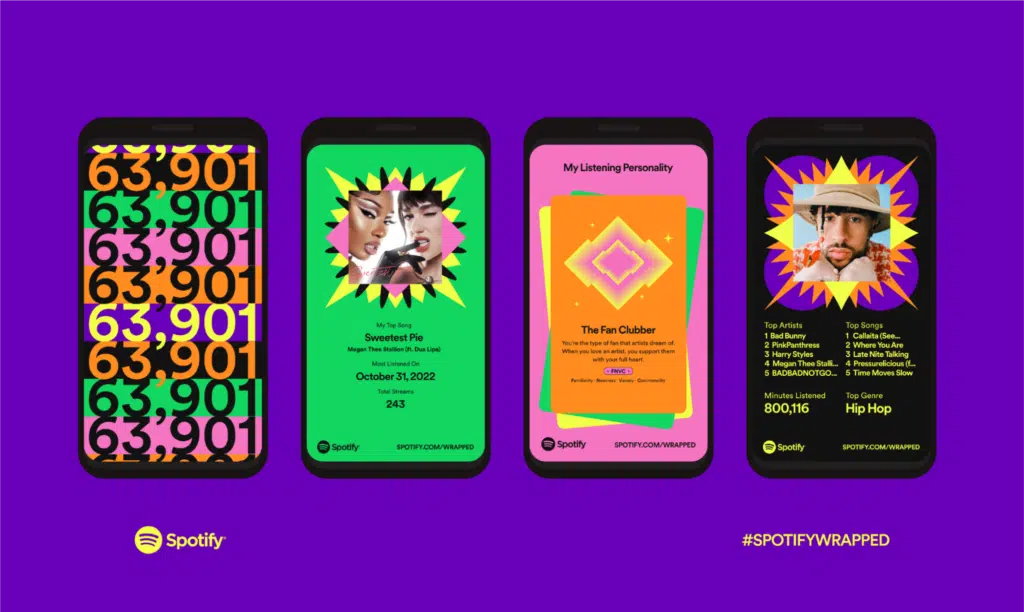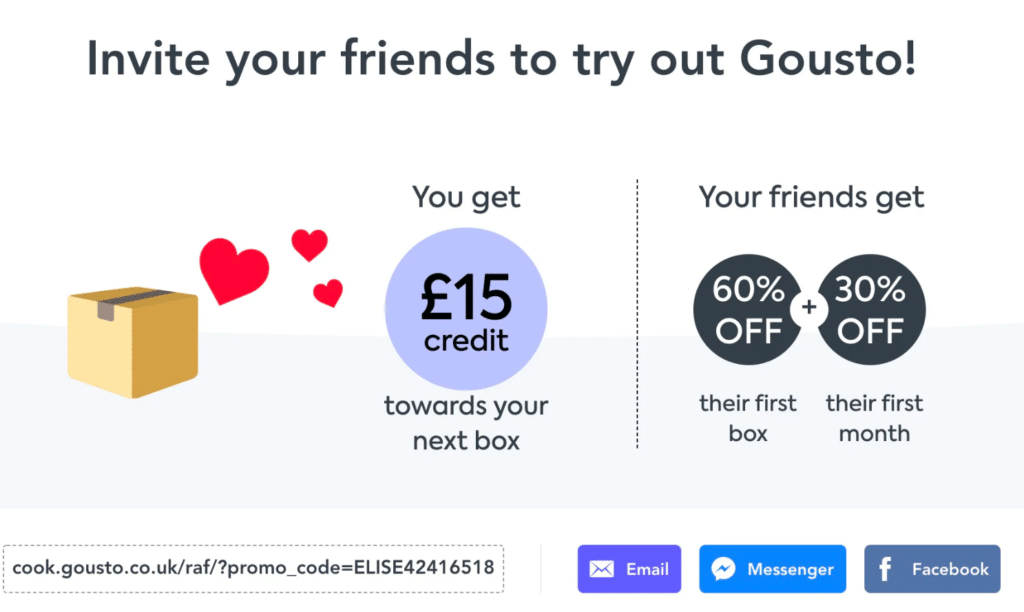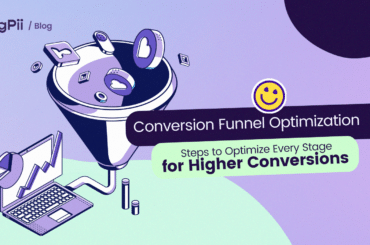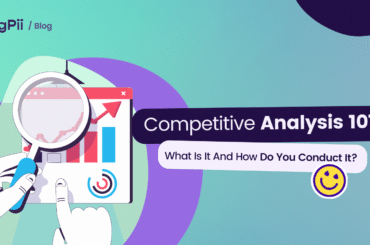Remember the last time you couldn’t stop raving about a new restaurant you tried or a book you couldn’t put down? You probably told your friends, family, or social media followers. Well, you were engaging in one of the most powerful forms of marketing out there—word-of-mouth marketing.
In this comprehensive guide, we’ll delve into what word-of-mouth marketing is, why it’s a game-changer for businesses big and small, and how you can leverage it effectively.
Here are some eye-opening statistics to set the stage:
- On average, word-of-mouth drives $6 trillion in annual global spending and is responsible for 13% of all sales.
- Twice as many sales come from word-of-mouth marketing as from paid ads.
- 74% of consumers identify word of mouth as a key influencer in their purchasing decisions.
- 72% of consumers get news from friends and family about products, making word of mouth the most popular channel.
The Evolution of Word-of-mouth Marketing
Once upon a time, word-of-mouth marketing was all about neighborly chats over the fence or discussions at community gatherings. Fast forward to today, and the landscape has shifted dramatically.
While the essence of word-of-mouth remains the same—people sharing their experiences and recommendations—the medium has evolved. Now, we have digital platforms that amplify these conversations, reaching not just a handful of neighbors but potentially millions around the globe.
In the traditional setting, word-of-mouth was limited by geographical boundaries and the size of one’s social circle. Today, digital word-of-mouth marketing has shattered those limitations. Online reviews, social media shares, and even influencer endorsements have become the new “over-the-fence” chats, making it easier for businesses to spread the word.
The Role of Social Media in Modern Word-of-Mouth Marketing
If traditional word-of-mouth marketing was a local community bulletin board, then social media is the global news network. Platforms like Facebook, Twitter, TikTok, and Instagram have become the go-to places for people to share their likes, dislikes, and recommendations.
A single tweet or Instagram story can make or break a product’s reputation.
Social media doesn’t just amplify the reach; it also adds a layer of credibility. Seeing their friends or trusted influencers endorsing a product often carries more weight than a traditional advertisement.
Moreover, social media allows for real-time engagement. Businesses can jump into conversations, address concerns, and even turn critics into brand advocates.
The Psychology Behind Word of Mouth Marketing
Imagine you’re deciding between two new smartphones. One has a flashy ad campaign, but the other comes highly recommended by a close friend. Chances are, you’ll lean towards the one your friend endorsed.
But why is that?
The answer lies in the power of trust and familiarity. When someone we know and trust recommends a product, it’s like getting advice from a trusted advisor.
We inherently believe that our friends and family have our best interests at heart, so their recommendations come with a built-in layer of credibility that advertisements just can’t match.
Why Word of Mouth Is More Than Just ‘Talk’
You might think word-of-mouth marketing is just casual conversations people have about their favorite brands or recent purchases. While that’s part of it, the impact of these discussions is far-reaching and can significantly influence a brand’s success.
Let’s dive into why word-of-mouth marketing is more than just idle chatter; it’s a tool with tangible benefits for businesses.
-
Builds Trust Quickly
Consumers are becoming increasingly skeptical of marketing messages in a world saturated with ads. Word-of-mouth marketing cuts through the noise by leveraging the most trusted source of information—people we know.
When a friend or family member recommends a product, it instantly gains credibility, building trust at a speed that traditional advertising can’t match.
-
Low Cost, High ROI
One of the most appealing aspects of word-of-mouth marketing is its cost-effectiveness. Unlike paid advertising, the investment is often minimal—sometimes as simple as providing excellent service.
Despite the low cost, the return on investment can be substantial, especially when a recommendation turns into a viral discussion.
-
Enhances Brand Loyalty
When customers love your product enough to talk about it, they’re not just customers; they’re advocates. This advocacy goes a long way in fostering brand loyalty. People willing to recommend your brand will likely stick around, making them more valuable in the long run.
-
Drives Organic Growth
Word-of-mouth marketing is like a snowball effect. One satisfied customer tells two friends, who each tell two more, and so on.
This organic spread is incredibly valuable because it comes with the endorsement of people with firsthand experience with your product, making it more likely to attract genuinely interested customers.
-
Increases Customer Engagement
When people talk about your brand, they’re not just sharing but engaging. This engagement can take many forms—online reviews, social media posts, or direct recommendations.
Each interaction is an opportunity for your brand to engage back, whether it’s thanking someone for a positive review or addressing a concern raised, thereby increasing overall customer engagement.
-
Amplifies Positive Customer Experiences
A positive experience can become a shared and reshared story, amplifying its impact. Whether it’s exceptional customer service or a product that exceeds expectations, word-of-mouth turns these individual experiences into communal knowledge, enhancing your brand’s reputation.
Types of Word of Mouth Marketing
Word-of-mouth marketing isn’t a one-size-fits-all strategy. It comes in various forms, each with its unique characteristics and advantages. Understanding these types can help you tailor your approach and maximize each opportunity.
-
Organic
Organic word-of-mouth marketing is the gold standard. It’s genuine, unsolicited, and happens when people can’t help but share their positive experiences with a brand or product. Here are some common types of organic word-of-mouth marketing:
-
Customer Recommendations
This is the classic form of word-of-mouth marketing. A satisfied customer tells their friends, family, or colleagues about a great product or service they’ve discovered. It’s straightforward, effective, and comes from a place of genuine satisfaction.
-
Social Sharing
When people share your content or mention your brand on social media without any prompt, that’s organic word-of-mouth at work. It could be a tweet about how much they love your product or an Instagram story showcasing it. These shares act as public endorsements, reaching a broader audience.

-
Unsolicited Reviews
These are reviews that customers leave on platforms like Yelp, Google, or even your website without any incentive. Because they’re voluntary, these reviews often carry more weight with potential customers.
-
Casual Mentions in Conversation
Have you ever been at a gathering where someone casually brings up a recent purchase they’re thrilled about? These offhand mentions in everyday conversations are a form of organic word-of-mouth marketing that can be incredibly impactful, even if they’re not as easily measurable.
-
Amplified
While organic word-of-mouth marketing relies on spontaneous customer advocacy, amplified word-of-mouth marketing is a more orchestrated effort. Brands actively encourage and facilitate these conversations through various campaigns and programs.
-
Campaigns
Brands often run social media campaigns to encourage users to share their experiences or participate in brand-related activities.
Think of hashtags that prompt users to share their stories or photos featuring the product. These campaigns can quickly gain traction and reach a wide audience.
An excellent example of a campaign that worked well was the #ShareACoke campaign by Coca-Cola, where they printed different names on every bottle of Coke produced in that period.
-
Viral Challenges
You’ve probably seen or even participated in a viral challenge on platforms like TikTok or Instagram. Brands create these challenges to engage users in a fun and interactive way.
The goal is to get the challenge trending, thereby amplifying the brand’s reach exponentially.
A good example is the #OnlyInMyCalvins challenge on TikTok, initiated by Calvin Klein. The campaign encourages users to post videos or photos of themselves wearing Calvin Klein products using the hashtag #OnlyInMyCalvins.

-
Influencer Takeovers
In this strategy, brands collaborate with influencers who take over the brand’s social media accounts for a set period, usually a day or a week.
The influencer brings their unique style and audience to the table, offering a fresh perspective and potentially attracting new followers to the brand.
-
Customer Testimonial Videos
Videos featuring real customers talking about their positive experiences with a product can be incredibly persuasive. These testimonials are usually showcased on the brand’s website or social media platforms, adding a layer of credibility and relatability.
-
Affiliate Programs
Brands can set up affiliate programs where loyal customers or industry influencers promote the product in exchange for a commission on sales generated through their unique referral link. It’s a win-win situation: the brand gains exposure and the affiliate earns a reward.
-
Loyalty Programs
Loyalty programs encourage repeat purchases by offering rewards or discounts to frequent buyers. But they also serve a secondary purpose: customers who benefit from a loyalty program are more likely to recommend the brand to others, thereby amplifying word-of-mouth marketing.
Strategies for Effective Word-of-Mouth Marketing
Knowing the types of word-of-mouth marketing is a great start, but how do you implement this knowledge? That’s where effective strategies come into play.
We’ll walk you through ten actionable strategies to harness the power of word-of-mouth marketing for your brand.
From creating shareable content to leveraging user-generated content, these strategies are designed to turn your customers into your biggest advocates.
-
Identify Your Advocates:
The first step in any successful word-of-mouth marketing strategy. These advocates are your goldmine; they’re the ones who will spread the word organically and authentically. But how do you identify them?
- Use Customer Surveys to Find Out Who’s Most Satisfied with Your Product.
- Look for Patterns in Customer Reviews to Identify Your Biggest Fans.
-
Create Shareable Content
People share content that resonates with them, whether it solves a problem they’ve been grappling with or simply brightens their day.
Aim to create content that does one or both of these things. How-to guides, problem-solving articles, or entertaining videos are all excellent candidates for shareable content.
Focusing on creating informative and shareable content helps you set the stage for organic word-of-mouth marketing.
-
Leverage Social Media
The third strategy zeroes in on the power of social media as a tool for amplifying word-of-mouth marketing. Social media platforms are where conversations happen, opinions are formed, and, most importantly, where recommendations are made.
To make the most of social media for your word-of-mouth marketing efforts, you should –
- Create a unique hashtag related to your brand or a specific campaign. Encourage satisfied customers to share their positive experiences using this hashtag.
- Make it a point to respond when someone mentions your brand or shares your content; whether it’s a simple “thank you” or addressing a question they may have, your engagement keeps the conversation flowing.
-
Implement a Referral Program
This is all about incentivizing word-of-mouth through a structured referral program. While organic word-of-mouth is great, sometimes people need a little nudge to take the action of recommending your brand. A well-designed referral program can provide that nudge.
The key to a successful referral program is offering something genuinely valuable to both parties. Whether it’s a discount, a freebie, or some exclusive content, make sure it will motivate your customers to take action. The more attractive the incentive, the more likely they are to refer others.
Nothing kills a referral program faster than a complicated process. Make it as easy as possible for your customers to refer others. Whether it’s a simple form on your website or a shareable link, the easier you make it, the more people will participate.
-
Foster Community Engagement
This strategy focuses on building a community around your brand. When people feel like they’re part of a community, they’re more likely to engage, share, and advocate for your brand. It’s about creating a space where customers can connect with you and each other.
To foster a sense of community among users, businesses and brands should –
-
Create Online Forums or Social Media Groups.
Setting up an online forum or a private social media group can provide a platform for your customers to interact. They can share tips, ask questions, and help solve each other’s problems.
-
Regularly Update the Community with News
Keep the community engaged by sharing regular updates, news, or sneak peeks of upcoming features or products. But don’t just talk at them—talk with them. Ask for their input, run polls, or even host Q&A sessions. This not only keeps the community active but also provides you with valuable customer insights.
-
Surprise and Delight
It’s also important to create those “wow” moments that customers can’t help but talk about. It’s called “Surprise and Delight,” and it’s as fun as it sounds. The idea is to go above and beyond in customer service by offering unexpected perks or bonuses. But don’t stop there—personalize the customer experience whenever possible.
Imagine ordering a coffee, finding a handwritten “Have a great day!” note on the cup, or receiving a small, unexpected gift with your online order. These gestures may seem small, but they make a significant impact.
They show customers that you see them as individuals, not just numbers on a spreadsheet. And when customers feel valued, they’re not just more likely to return; they’re more likely to tell others about their fantastic experience.
-
Monitor and Respond to Reviews
In today’s digital age, reviews are the modern word-of-mouth. They’re the first thing potential customers see when they search for your product or service online.
Keep an eye on review sites and make it a point to respond to positive and negative reviews. A simple “Thank you for your feedback!” can go a long way in showing that you value customer opinions. But don’t just stop at the positive reviews.
Negative reviews can feel like a blow, but they’re golden opportunities. Use them as a chance to improve and show that you’re listening.
A thoughtful, professional response to a negative review can turn a dissatisfied customer into a satisfied one and show potential customers that you’re committed to resolving issues.
This shows that you care about customer feedback and are willing to take steps to improve, which can encourage more positive word-of-mouth.
-
Partner with Influencers
In the age of social media, influencers can be your brand’s best advocates. But it’s not just about picking someone with a large following; it’s about finding the right fit for your brand.
Choose influencers whose audience aligns with your target market. This ensures that your product is showcased to people most likely to be interested in it.
Additionally, make sure the influencer genuinely likes your product. Authenticity is key in influencer marketing; a genuine endorsement will resonate more with the audience and lend credibility to your brand.
When you strategically partner with influencers, you’re extending your reach and tapping into established communities of potential customers.
-
Use Customer Testimonials
Customer testimonials are like the cherry on top of your marketing sundae. They provide social proof, build credibility, and can often tip the scales in favor of a purchase decision.
Feature testimonials prominently on your website and marketing materials to give potential customers a sense of confidence. But don’t just stick to one format; variety is key.
Use a mix of video and written testimonials to cater to different audience preferences. While written testimonials are quick to scan and can be powerful in their own right, video testimonials offer a more personal, relatable touch.
-
Measure and Adapt
The road to effective word-of-mouth marketing isn’t set in stone; it’s more like a winding path that requires occasional course corrections. That’s where measurement and adaptation come in.
Use analytics tools to track the success of your word-of-mouth strategies. Whether it’s monitoring referral links, tracking hashtag usage, or measuring engagement rates, data is your best friend in understanding what’s working and what’s not.
However, collecting data is just the first step. Be willing to adapt and tweak your approach based on what the numbers tell you.
If a specific strategy isn’t yielding the results you hoped for, don’t be afraid to pivot. On the flip side, if something is working exceptionally well, consider doubling down on it.
Common Mistakes and How to Avoid Them
Even the best strategies can fall flat if you’re unaware of the pitfalls that can derail your word-of-mouth marketing efforts. Here are some common mistakes and how to steer clear of them.
-
Overlooking negative feedback
One of the biggest missteps in word-of-mouth marketing is ignoring or dismissing negative feedback. While focusing only on the positive is tempting, doing so can be costly.
Ignoring negative feedback doesn’t make it go away; it just festers and can escalate. What starts as a single negative comment can snowball into a full-blown PR crisis if not addressed.
To avoid this, when you do receive negative feedback, address it head-on and do so publicly. This shows that you’re committed to resolving issues and value customer feedback.
Believe it or not, negative feedback can be one of your most valuable assets. It provides direct insight into where to improve, offering a roadmap for improving your product or service.
-
Failing to adapt and evolve
Another common pitfall in word-of-mouth marketing is becoming complacent. Sticking to outdated methods or platforms might feel safe, but it’s a surefire way to stagnate.
The digital landscape is ever-changing; what worked yesterday may not work tomorrow. This makes continuous learning and adaptation not just beneficial but essential.
So, how do you stay ahead of the curve?
Keep an eye on industry trends and shifts in consumer behavior. Subscribe to relevant newsletters, follow industry leaders on social media, and never stop testing and tweaking your strategies.
When you stay updated and are willing to evolve, you’re not just keeping up with the times; you’re setting yourself up to be a trendsetter in your own right.
-
Ignoring metrics.
Without tracking or analyzing, you’re flying blind, relying on guesswork rather than data-driven insights.
Setting Key Performance Indicators (KPIs) and regularly reviewing them is crucial. These metrics serve as your compass, guiding you toward what’s working and steering you away from what’s not.
Keeping a close eye on metrics ensures that your strategies align with your goals, making your word-of-mouth marketing efforts more effective and efficient.
Over To You
Word-of-mouth marketing isn’t just a buzzword; it’s a game-changer. From building trust to amplifying your brand’s reach, the benefits are too good to ignore. So, don’t just sit on this goldmine of information. Put it to work!
Get out there and start conversations, build relationships, and, most importantly, listen to your customers. The best marketing doesn’t feel like marketing—it feels like a genuine connection.
So go ahead, make your brand the talk of the talk of the internet!







